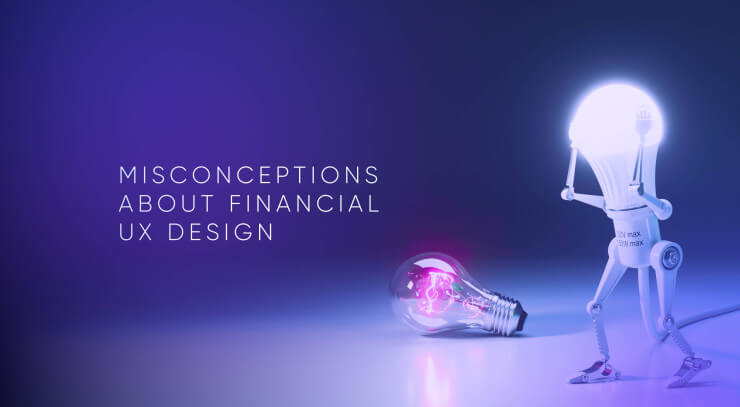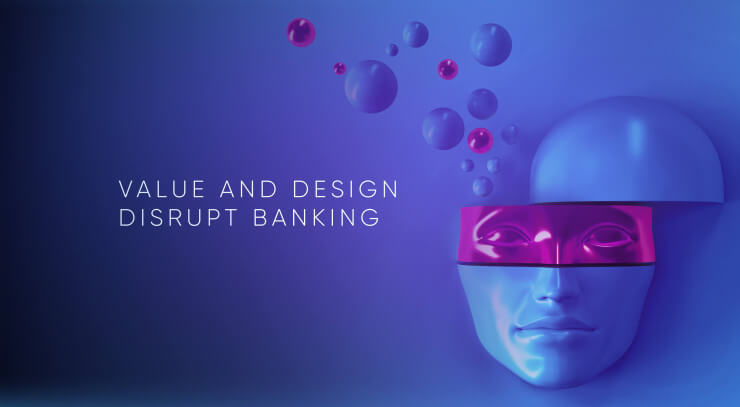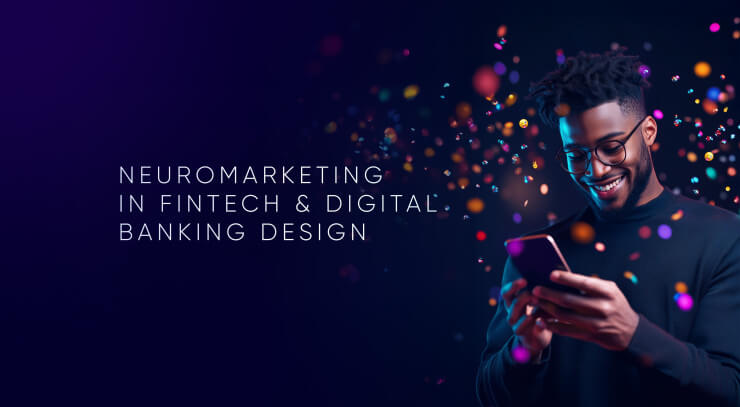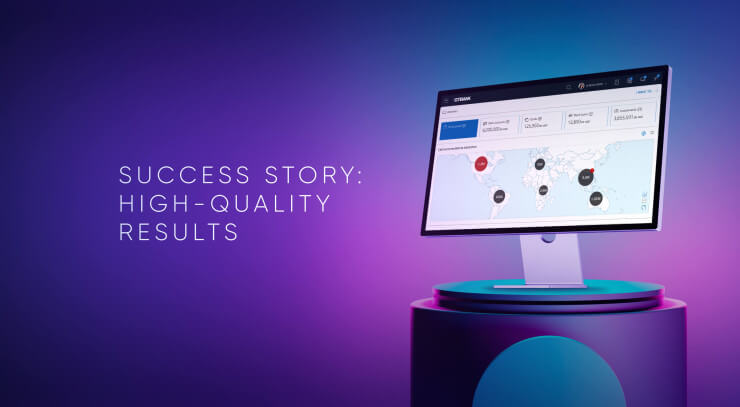If we can land rockets on ocean barges, we can figure out how to make digital banking trustworthy. It’s not about just transferring money faster; it’s about creating an experience so seamless and transparent that customers feel as confident in their banking app as they would in a person standing across the counter. Modern financial technology’s greatest challenge isn’t speed or scale—it’s trust.
Emotional Trust Gap in Digital Finance
The #1 hidden challenge with which every financial brand struggles with digital customer experience is bridging the emotional trust gap. While digital channels excel at transactions, they often feel “functionally correct but emotionally devoid,” failing to forge human connections according to an Accenture Global Banking Consumer Study. Sixty-six percent of US consumers like seeing branches in their neighborhood, and 71% turn to the branch mainly to solve specific and complicated problems.
In finance, digital experiences often excel at convenience, speed and functionality—but beneath the surface, they rarely manage to fully replicate the emotional reassurance and trust formerly established through face-to-face interactions. Customers fundamentally seek not only seamless transactions but also a sense of confidence, transparency and security. While trust-building may seem intangible, it profoundly impacts customer loyalty, retention and long-term value.
Financial decisions carry significant emotional weight—customers worry about safety, privacy and the potential for losses. When digital experiences overlook or inadequately address these concerns, users subconsciously feel anxious or uncertain, resulting in friction and hesitancy. Too often, financial brands underestimate the power of empathetic communication, transparent interactions and personalized touchpoints that reassure users in critical moments.
Research shows that emotional resonance can trump pure utility in finance. A Deloitte study found trust and empathy drive customer loyalty and retention more than feature count. Likewise, Accenture noted that digital channels that lack emotional connection fail to convert loyalty. Banks are thus shifting UX focus to how customers feel during key moments—designing interfaces that convey understanding, security and personal value, not just what tasks customers can accomplish.
Because the financial world is inherently complex, customers crave clarity and guidance rather than just raw data or efficient flows. By ignoring these emotional dimensions, brands risk frustrating users who may seek out competitors that provide digital empathy. Consequently, bridging the emotional trust gap with human-centric UX is the ultimate differentiator for financial brands aiming to succeed in the digital age.
However, placing empathy, reassurance and transparency at the heart of user interactions calls for a mature UX design strategy. This progression entails moving beyond basic UX adoption—in which the focus is often on cosmetic adjustments—into a cohesive, strategic UX integration woven into a financial institution’s culture and long-term vision. Below, we’ll explore how banks can advance through three UX maturity stages, address deeper trust-related needs and secure a lasting competitive edge.
The Case for Elevating Trust-Focused UX in Banking
Over the past decade, digital banking has evolved at an unprecedented pace as financial institutions scramble to meet the expectations of an increasingly tech-savvy customer base. Many banks now recognize user experience (UX) as a critical pillar of digital transformation. Yet there remains a stark difference between cosmetic UX enhancements and the deep, strategic integration required to build genuine trust.
In today’s on-demand environment, customers evaluate digital products primarily through the lens of convenience and ease of use. For banking, however, the stakes are higher because trust underpins every aspect of financial decision-making. Banks that fail to prioritize users’ emotional and functional needs risk losing ground to more user-friendly (and trust-focused) Fintech competitors.
A well-executed UX strategy does more than improve interface aesthetics—it can:
- Increase customer acquisition and retention through high satisfaction and loyalty.
- Reduce support costs by minimizing user confusion and error rates.
- Boost revenue by building deeper digital engagement and cross-sell opportunities.
When embedded thoughtfully, UX initiatives generate a sustained competitive advantage. This advantage grows even stronger in finance, an arena in which trust and emotional well-being are paramount. It’s not just about visual design; it’s about addressing customers’ underlying concerns, providing transparency and validating their confidence in your institution.
The Three Stages of UX Maturity in Digital Banking
Stage One: Basic UX Adoption
Banks in this initial phase often bring in designers or outsource limited UX tasks to “refresh” their digital app's interface. Efforts primarily revolve around surface-level changes—like modernizing color schemes, updating logos or reorganizing layouts.
Key Characteristics:
- Minimal user research—choices are frequently based on generic design ideas rather than solid data and financial UX design expertise.
- UX efforts are one-off or project-based, lacking a continuous feedback cycle.
- Changes may enhance visual appeal but rarely address deep-rooted usability, service process or trust issues.
Pitfalls:
- Limited comprehension of the end-to-end customer journey—especially its emotional components.
- Difficulty gauging the long-term effect of superficial improvements.
Example of a Basic UX Approach
A bank “modernizes” its mobile app with sleek icons and a more vibrant color palette. However, essential processes—such as registering a new account, scheduling payments or complex navigation—still feel cumbersome. Customers might appreciate the new look yet remain frustrated by confusing steps and inadequate clarity regarding fees or transaction statuses. Consequently, trust remains fragile despite the facelift.
Stage Two: Systematic UX Design
In this phase, banks acknowledge that design changes alone can’t resolve underlying customer pain points. They invest more methodically in UX, introducing structured processes, design systems and regular user research.
Key Characteristics:
- Routine usability testing and systematic collection of feedback.
- Growing collaboration among product, IT, marketing, compliance and UX teams.
- A commitment to consistent design systems and practices and standards across channels.
Opportunities:
- Using data-driven insights to continuously refine navigation, content and features.
- Establishing design protocols that minimize inconsistencies, reduce development costs and nurture trust through clear communication and intuitive flows.
Example of a Systematic UX Approach
Upon analyzing customer feedback, a regional bank realizes users abandon the mobile check deposit feature due to complex instructions and frequent errors. The UX team redesigns the feature, clarifying directions and streamlining steps to foster user confidence. Post-launch data shows a decrease in abandonment rates and an uptick in overall satisfaction—indicating the bank is starting to address the root causes of user frustration and mistrust.
Stage Three: Strategic UX Integration
At this advanced stage, UX forms the backbone of the bank’s decision-making, culture, processes and strategic outlook. Every digital and physical touchpoint—from mobile apps to call centers—must reflect a consistent, empathetic and trustworthy experience.
Key Characteristics:
- Strong executive sponsorship, with continuous investment and company-wide support for UX initiatives.
- Embedded feedback loops that allow for rapid iterations based on real customer behaviors and needs.
- Seamless collaboration across design, risk, compliance and technical teams, ensuring both regulatory requirements and user trust are upheld.
Transformational Impact:
- Elevated Brand Perception: Your institution becomes synonymous with innovation, transparency and empathy.
- Distinct Market Position: Competitors focusing on superficial updates cannot easily replicate a deeply ingrained, user-centric culture.
- Customer-Centric Innovation: New products and services closely match genuine user needs—both practical and emotional—leading to higher retention and brand authenticity.
Example of a Strategic UX Approach
A global bank embeds UX specialists and outsources focused financial UX competence for every major department—from retail banking to wealth management. UX experts collaborate with data analysts, compliance officers and product managers to gain ongoing insights into customer sentiment and pain points. This holistic approach ensures that each new service or app enhancement directly tackles user concerns, reinforcing trust, usability and emotional connection through consistency, transparency, simplicity and personalized guidance.
A great example of a strategic UX approach is Emirates NBD, one of the largest banks in the Middle East, which partnered with UXDA to transform their digital banking experience. By deeply integrating user-centric design across their ecosystem, the bank achieved remarkable results—increasing their mobile banking engagement by 50% and significantly boosting customer satisfaction. This case study exemplifies how a strategic UX approach can drive digital innovation, competitive differentiation and measurable business value.
From Basic to Strategic: What Changes Are Needed to Stimulate Maturity
Transitioning from a basic UX approach to the adoption of a fully strategic UX and trust-centered approach requires a cultural and procedural shift. Below are the foundational steps:
Executive Buy-In and Advocacy
- Why It Matters: Major organizational change begins at the top. Leadership must fully commit to UX initiatives to ensure adequate resources and cross-departmental collaboration.
- Next Step: Invite executives to experience UX issues firsthand—such as participating in user interviews—to demonstrate how poor UX undermines trust.
Invest in Deep User Research
- Why It Matters: Meaningful improvements hinge on understanding the emotional and practical needs of customers.
- Next Step: Employ ethnographic research, surveys and usability testing. Integrate findings into product roadmaps, ensuring trust is always a core focus.
Integrate UX Approach Throughout the Organization
- Why It Matters: Embedding UX pros on key teams ensures user-centric principles guide each decision—from concept to launch.
- Next Step: Outsource best financial UX experts and appoint dedicated in-house UX leads for critical areas (e.g., mobile, lending, onboarding, etc.). Encourage persistent collaboration to foster empathy and reliability in all product experiences.
Develop a Robust Design System
- Why It Matters: A standard design language eases cross-channel consistency—crucial for building brand digital authenticity, familiarity and trust over time.
- Next Step: Craft clear guidelines and create a library of reusable UI components. This ensures uniform branding, tone and usability across all digital properties.
Adopt a Continuous Feedback Loop
- Why It Matters: UX isn’t “finished” after a launch. Continuous iteration keeps pace with evolving market trends and customer expectations.
- Next Step: Schedule regular feedback cycles—monthly or quarterly—to review user data and make swift adjustments in areas in which trust is compromised or confusion arises.
Align Compliance and Risk with UX
- Why It Matters: Regulatory safeguards can seem at odds with a smooth user flow, but combining them early in the process fosters confidence.
- Next Step: Involve compliance professionals during ideation so user flows uphold legal standards while maintaining clarity and simplicity that bolster trust.
Long-Term Business Outcomes of Strategic UX
When UX is integrated as a core strategy around trust-building—the benefits stretch far beyond app functionality or aesthetics:
- Elevated Customer Loyalty and Brand Advocacy: Removing friction and providing reassurance encourages customers to champion your brand. Hence, word of mouth and referral rates increase organically.
- Improved Revenue and Reduced Costs: A user-friendly and trustworthy ecosystem boosts digital adoption, cutting contact center volume and operational overhead. Cross-selling becomes more organic when customers feel secure.
- Faster Innovation Cycles: With well-defined UX practices, banks can swiftly experiment, test and refine new digital features—staying ahead of market shifts and nurturing trust through proactive enhancements.
- Strengthened Regulatory Compliance and Security Confidence: Merging compliance requirements with user-centric thinking helps banks avoid clunky experiences while conveying reliability, reassuring users that their data and finances are secure.
- Differentiation in a Crowded Market: As more Fintechs and challenger banks emerge, a financial institution that genuinely integrates trust-focused UX stands out. Superficial design overhauls can be copied, but a deep culture of empathy and reliability cannot.
The Future of Finance Runs on Trust, Not Transactions
Trust is the bedrock of finance, yet many digital banking solutions prioritize efficiency and aesthetics at the expense of emotional security. Establishing an authentic sense of trust and reassurance requires more than a design refresh—it demands an organization-wide transformation. By focusing on empathy, consistent transparency and the real-world digital challenges customers face, banks can cultivate a user-first culture that drives loyalty, reduces friction and boosts long-term revenue.
Yes, this is a significant undertaking. But for institutions ready to move past basic UX adoption and invest in genuine, strategic UX integration, the rewards are profound: a more resilient brand reputation, deeply satisfied customers, improved operational efficiency and a critical edge in an era in which trust can determine the difference between a fleeting user relationship and a lifelong partnership.
Modern financial institutions are grappling with an ever-evolving landscape of user expectations and technological advancements. Traditional banking services often fall into the trap of playing it safe, resulting in generic and uninspired user experiences that fail to capture the true potential of digital interaction.
But what if the path to success lies in embracing the unconventional? UXDA's Dopamine Banking approach suggests five counterintuitive product design strategies that can transform your financial app into a standout success:
1. Embrace Simplicity by Adding Complexity
Mainstream Problem: Financial apps are notorious for their cluttered and over-featured interfaces, overwhelming users with too much information all at once. The common solution is to simplify.
Counterintuitive Solution: Instead of stripping down features, consider embracing complexity in a structured manner. Use progressive disclosure to reveal information and features gradually. By layering information, you allow users to delve deeper at their own pace, which can actually simplify the overall experience.
Example: Think of it like a well-organized library. Instead of throwing all the books on a single shelf, categorize them into sections and subsections. Users can explore each section as their needs and curiosity guide them.
2. Prioritize Emotional Design Over Functionality
Mainstream Problem: Banking apps typically focus on functionality, often at the expense of emotional engagement.
Counterintuitive Solution: Shift your focus to emotional design. According to research by Aarron Walter in Designing for Emotion, interfaces that evoke positive emotions are more likely to create lasting user relationships. Incorporate elements that resonate emotionally, like personalized greetings, friendly microcopy and delightful animations.
Example: A banking app that celebrates your financial achievements—whether it’s reaching a savings goal, paying off a loan or sticking to a monthly budget—with cheerful animations and uplifting messages, turns routine financial tasks into emotionally rewarding experiences that build a sense of progress and motivation.
3. Leverage Friction to Enhance Security
Mainstream Problem: The prevailing belief is that reducing friction improves the user experience. However, too little friction can compromise security.
Counterintuitive Solution: Introduce deliberate friction at key points to enhance security and build trust. For instance, requiring additional verification steps for high-value transactions can reassure users about the app’s commitment to safeguarding their assets.
Example: Consider advanced KYC and AML identity verification when opening a bank account. While it adds some friction, customers understand it's essential for protecting their funds and preventing fraud. Similarly, users are more likely to accept, and even appreciate, banking security measures when they are clearly explained and presented in the right context.
4. Design for Micro-Moments
Mainstream Problem: Banking apps often try to be comprehensive platforms, aiming to fulfill all user needs in one place.
Counterintuitive Solution: Instead of a one-size-fits-all approach, design for micro-moments—those brief interactions in which users need to accomplish a specific task quickly. Focus on optimizing these micro-interactions to be as efficient and frictionless as possible.
Example: A feature that allows users to quickly check their investments or transfer money with a single tap caters to the need for instant information and action.
5. Use Gamification to Build Financial Literacy
Mainstream Problem: Financial education features in banking apps are often dry and unengaging.
Counterintuitive Solution: Gamify the financial learning experience. Integrate game mechanics like rewards, challenges and progress tracking to make financial education engaging and interactive. This approach can make learning about personal finance enjoyable and habitual.
Example: Think of apps like Duolingo for language learning. By applying similar principles, your banking app can turn financial education into a fun, rewarding game, encouraging users to build better financial habits through regular engagement.
As we move forward in the digital age, it's crucial for financial institutions to rethink their approach to digital experience design. By embracing even counterintuitive strategies, financial companies and banks can break free from conventional molds and offer their users a digital service that is not only functional but also emotionally engaging, secure and enjoyable. It's time to renew and revolutionize financial product interfaces, creating a future in which banking or financial services is not just a necessity but a delightful part of everyday life.
When user expectations are constantly evolving, the key to staying ahead lies in continuous innovation. Challenge the norms, embrace the unconventional, and transform your financial app into a beacon of user-centered design excellence. The future of finance is not just about transactions; it's about creating digital experiences that resonate on a human level.
Discover our clients' next-gen financial products & UX transformations in UXDA's latest showreel:
If you want to create next-gen financial products to receive an exceptional competitive advantage in the digital age, contact us! With the power of financial UX design, we can help you turn your business into a beloved financial brand with a strong emotional connection with your clients, resulting in success, demand, and long-term customer loyalty.
- E-mail us at info@theuxda.com
- Chat with us in Whatsapp
- Send a direct message to UXDA's CEO Alex Kreger on Linkedin


















